
Illegal Drug Use and Teens Part 2
2/28/2022
Last post, we discussed how many teens are using illicit drugs, what teens are at risk of illicit drug use disorder, and how to talk to teens about drug use. We also learned about marijuana and inhalants, what they do to the body, and long-term effects. This post, we will talk about hallucinogens, narcotics, stimulants, depressants, and anabolic steroids.
ILLEGAL DRUGS BY DRUG CLASS
HALLUCINOGENS
Hallucinogens include Lysergic Acid Diethylamide (LSD), psilocybin, ketamine, and phencyclidine (PCP).
LSD and Psilocybin
LSD is a mood-altering chemical that is found in ergot fungus. Other names for LSD include acid, barrels, cube, microdot, white dust, purple haze, and sugar cubes, LSD can be found as colored tablets, capsules, thin squares of gelatin, blotter paper, and sometimes liquid. It can be ingested or licked off paper. The gelatin squares and liquid forms can be put into the eyes. LSD was commonly used in the 1960s but has decreased in popularity since. The LSD that is currently available is 1/3 the strength of the LSD used in the 60s.
Psilocybin or psilocin are chemical from wild mushrooms. They are also known as shrooms, purple passion, and sacred mushrooms. They are found as dried mushrooms or dried material in a capsule. Synthetic versions are found as powders that can be made into tablets, capsules, or dissolved in liquid.
Drug Effects
LDS and psilocybin have unpredictable effects that depend on the amount of drug taken and the user’s mood, personality, expectations, and surroundings. After ingesting the drug, it can take 30-90 minutes to work, and the effects can last for 1 to 12 hours.
Common effects include hallucinations, distortions of time and space, and distortions of body. A person may also experience synestia. Synestia is when a person’s’ senses combine so that a person tastes sound or hears colors. A person may have rapid mood swings and delusions. Their heart rate, blood pressure, and temperature may elevate.
A person who has used LSD or psilocybin may appear to be in a trance-like state. They may be euphoric or excited. They may also have emotional swings. They may have dilated pupils, tremors, decreased appetite, sweating, dry mouth, slurred speech, irritational behavior, aggression, or paranoia.
A “bad trip” can happen in which a person experiences terrifying thoughts, feelings of panic or fear, fear of going insane or dying, and despair. It can happen during any use of LSD or psilocybin including the first time.
Long Term Health Risks
A long-term risk of using LSC or psilocybin is the risk of flashbacks. A person can get flashbacks of previous “trips”. These occur days to months after the “trip” and can occur without warning. There is some thought these flashbacks may be triggered by stress and fatigue.
Ketamine and Phencyclidine
Ketamine and phencyclidine (PCP) are anesthetics. Anesthetics are medications that produce a loss of sensation. Ketamine is also known as K, special K, ket, kit kat, cat Valium, super acid, super C, or bump. It is found as a white powder, liquid, or capsule. The liquid is injected. The powder can be mixed into drinks, snorted, or smoked, often being “sprinkled” on top of marijuana or another smokable substance.
PCP is also known as angel dust, hot, animal tranq, elephant, belladonna, DOA, or magic dust. It can be found as a white, tan, or brown powder, tablets, capsules, or liquid. It is orally ingested or injected. It can also be applied to a leafy substance before ingesting and often is added to mint, parsley, oregano, or marijuana.
Drug Effects
Ketamine and PCP have different effects based on dose. Low doses result in feelings of numbness in arms or legs, lack of coordination, feeling detached, shallow breathing, flushed skin, increased heart rate, and increased blood pressure.
Higher doses result in a decrease in heart rate, blood pressure, and respiratory rate. These changes can result in a coma or seizures. A person may vomit, have nausea, blurred vision, rapid involuntary eye movements, drooling, garbled speech, dizziness, loss of balance, hallucinations, distorted images, and delusions. They often experience increased strength but don’t feel pain which results in increased risk of injury. Their thinking may be jumbled. They may feel like they are moving in slow motion.
PCP often induces hostile, violent, and sometimes suicidal behavior. It is considered the most dangerous drugs of abuse because of this effect.
Long Term Health Risks
Long term use can result in flashbacks, severe depression, memory loss, impaired speech, weight loss, and irregular menstruation. It can also trigger schizophrenia. In teens who use PCP or ketamine, their physical growth can be impaired as well as their ability to learn.
NARCOTICS
Narcotics are medications derived from opium and used to relieve pain and act as an analgesic. Narcotics include prescription pain medications such as codeine, morphine, methadone, hydromorphone) dihydrocodeine, pentazocine, propoxyphene, and meperidine. It also includes heroin and fentanyl.
Heroin is also known as smack, H, big H, scag, scat, junk, black tar, China white, chiva, or dope. It is a powder that can be colored white to dark brown. Some forms look tar- or coal-like. Heroin is injected beneath the skin, into a vein, snorted, smoked, or inhaled. It can also be dissolved in lemon juice and put in the nose with a dropper.
Fentanyl is a synthetic opioid. It is also known as apache, friend, great bear, he-man, jackpot, king ivory, TNT, and poison. It can be found as a powder, candy-like drops on blotter paper, eye drops, nasal sprays, patches, lozenges, and pills. It can be found mixed into heroin, cocaine, methamphetamine, and MDMA by drug dealers. It is 50 to 100 times more potent than morphine.
Narcotics are becoming a frequently abused drug. Over 50% of kids start using narcotics by first abusing prescription pain medications such as Vicodin, Oxycontin, Percocet, and codeine. They get most of these medications from friends and family. Often, they turn to heroin once addicted as heroin is cheaper and more widely available.
Drug Effects
A person who takes a narcotic may feel extreme euphoria, drowsiness, nausea, and confusion. It may cause sedation, decreased heart rate, problems breathing or slowed breathing, and unconsciousness. After the initial euphoria, a person feels a strong dysphoria.
Long Term Health Risks
The biggest risk of long-term narcotics use is physical dependence and addiction. Other long-term effects include nausea, vomiting, itching, constipation, not being able to urinate, confusion, and mental disturbances. They may also suffer skin infections at injection sites.
Addiction
Opioids are highly addictive narcotics. The brain adapts to the opioids making it less sensitive not only to the drug but also to feeling anything else pleasurable. The strong euphoria followed by dysphoria creates addiction as a person chases the feeling of euphoria. Each use requires a higher dose to achieve the same euphoric effect. As the dose increases, the withdrawal symptoms increase. This encouraging the person to use again to get rid of the withdrawal symptoms. Dependence can occur in as little as 4-8 weeks of use.
Withdrawal symptoms include muscle and bone pain, dilated pupils, insomnia or sleep problems, severe diarrhea, nausea, vomiting, cold flashes, goosebumps, uncontrolled leg movements, and severe cravings. Withdrawal symptoms can cause anxiety, restlessness. It can be severely uncomfortable.
The craving for the drug becomes so powerful, finding the drug takes over people’s life. A person will become preoccupied with finding more drugs, money for the drugs. A person may start avoiding work, school, or obligations at home. They may give up activities. They may be moody, have bursts of temper, or start taking unusual risks.
Overdose
An overdose occurs when the narcotic causes breathing to slow or stop. This decreases the oxygen in the body and the brain. Decreased oxygen can result in a coma, permanent brain damage, and death. Overdoses can happen when a person takes a higher dose of the drug than previously taken. It can also happen if another drug has been mixed with fentanyl and the person does not know there is fentanyl in that drug. Fentanyl is the most common drug seen in overdoses accounting for over 59% of all drug overdoses. Deaths from overdosing have increased over 500% since 1999 and continues to increase by 30% every year. In 1 year, almost 5,000 young people aged 15-24 died from overdoses.
If an overdose is recognized earlier enough, a drug called naloxone can be given. This medication binds opioid receptors and blocks the effect of the drug. Fentanyl is so strong that it sometimes requires multiple doses of naloxone.
STIMULANTS
Stimulant drugs include cocaine or crack, methamphetamine, methylene dioxymethamphenatimine (MDMA), and abuse of prescription stimulant medications such as amphetamines and methylphenidates.
Although use of cocaine has decreased significantly since the 1980s, the rate of teen using cocaine increased 56% from 2017-2020. Over 5 % of 12–17-year-olds have tried cocaine and 1.6% have tried crack. Another 1.1% have tried methamphetamine, 4.4% have abused Adderall, 4.3% amphetamines, 1.8% Ritalin.
Cocaine and Crack
Cocaine and crack were frequently used stimulant dugs in the 1980s. Cocaine and crack are highly addictive stimulants made from the coca bush. Cocaine is also called coke, blow, flake, snow, happy powder, gold dust, nose powder, nose candy, toot, white lady, big C, Peruvian flake, and Bolivian marching powder. Crack is also called rock, base, baseball, bazooka, piece, kibbles and bits, gravel, one-fifty-one, and teeth. If mixed with heroin it is called goofball, speedball, Belushi, whiz, bang, wings, or witch. If mixed with marijuana it is called banana, bush, coca puff, or hooter. If mixed with PCP it is called parachute.
Cocaine comes as a white powder that is snorted or injected. Crack is a white or tan nugget or rock-like substance that is smoked. Cocaine’s effect lasts 15-30 minutes whereas crack’s effects last 5-10 minutes.
Drug Effects
Cocaine and crack stimulate the nervous system. This results in brief feelings of euphoria, increased alertness, and a sense of empowerment. It may make a person more talkative. They may also appear sweaty and restless. They may have nausea or vomiting when high. It increases body temperature, heart rate and blood pressure. These drugs can alter heart rhythms and cause heart attacks, seizures, or strokes.
When coming down from the high, a person may feel sad, paranoids, delusional, or suicidal.
Long Term Health Risks
Long term cocaine or crack use can result in dry nose or mouth, stuffy noses, frequent nose bleeds, and chronic respiratory infections. Frequent snorting can cause damage to tear ducts, cause eye infections, and the breakdown of the bones of the eye socket. It can also result in violent behaviors, hallucinations, drug induced psychosis. It may cause insomnia and appetite loss. A person may experience impaired sexual performance or irregular menstruation. Because cocaine affects the heart and heart rhythm it can result in permanent heart damage and cardiac arrest.
Addiction
Cocaine and crack are highly addictive. They cause strong cravings. A person also needs more and more drug to feel the same euphoria. And when a person does not take the drug, they get severe withdrawal symptoms including lethargy, muscle weakness, irritability, slowed comprehension, and depression.
Methylene Dioxymethamphenatimine (MDMA)
MDMA is a synthetic or “designer” drug that acts as a stimulant and a hallucinogen. It was designed to avoid the controlled substance act (that has since changed and is now included). MDMA is also called ecstasy, XTC, Adam, love drug, decadence, essence, E, and molly. It can be found as a white powder, tablet, or capsule. It can be ingested, inhaled, or injected. MDMA takes effect in 30-45 minutes and the effects last for 3-6 hours.
Drug Effects
A person who takes MDMA experiences increased energy, increased pleasure, altered sensations, and increased empathy. It increases sexual arousal as well as feelings of trust and emotional closeness. It also can result in increased heart rate and blood pressure. It may also cause nausea, muscle cramps including involuntary teeth clenching, blurred vision, chills, sweating, and fainting.
Long Term Health Risks
MDMA users may suffer from confusion, depression sleep problems, anxiety, or paranoia even weeks after taking it. They may be irritable, impulsive, or aggressive. They may have memory or attention problems. They may also have decreased interest in sex or pleasure from sex.
High doses can cause issues regulating body temperature. It can also cause liver, kidney, or heart failure. These can result in death.
It is still debated whether MDMA is addictive, but some people note withdrawal symptoms once stopping. These symptoms include fatigue, loss of appetite, depression, and trouble concentrating.
Prescription Stimulants
Prescription stimulants such as dextroamphetamine/amphetamines (Adderall) or methylphenidates (Ritalin, Concerta) are used to treat ADHD but can be abused. Abuse happens when they are taken in a way that isn’t prescribed or a dose that is not prescribed, when it is someone else’s medication, or a person is taking it only for the euphoric effect.
Abused prescription stimulants may be called uppers, bennies, amies, amp, Dexies, dominoes, pep pills, meth, chalk, crystal meth, speed, crank, crypto, and crystal glass. They can be found as pills, capsules, and tablets. They can be taken orally but they can also be illegally processed into a form that can be dissolved, snorted, smoked, or injected.
Drug Effects
People who abuse stimulant medication may feel euphoria, increased alertness, attention, and energy. They may also note increased blood pressure, increased heart rate, increased respiratory rate and increased blood sugar. At high doses, body temperature may dangerously increase. It may also cause an irregular heartbeat, heart failure, or seizures. Injected medication can cause damage to small blood vessels in the lungs and retinas due to filler in the medication blocking them and reducing blood flow.
High doses may also cause restlessness, tremors, overactive reflexes, rapid breathing, confusion, aggression, hallucinations, panic, muscle pain, and muscle weakness. A person may have nausea, vomiting, diarrhea, or abdominal cramps. It is possible to overdose on prescription stimulant medications and suffer convulsions, a coma or death.
Long Term Health Risks
Long-term misuse of prescription stimulants can cause psychosis, anger, or paranoia. A person may show the same symptoms as someone with schizophrenia. Suddenly stopping these medications, if being abused, can cause fatigue, depression, and sleep problems.
Methamphetamine
Methamphetamine is a highly addicted and powerful stimulant also known as crystal meth, ice, or glass. It comes as clear or shiny blue-white crystals or rocks. It can be smoked with a glass pipe, swallowed, snorted, or injected into a vein. A prescription form does exist, but the most available form is a synthetic version made by drug dealers. A high occurs immediately and may last for up to 12 hours.
Drug Effects
Methamphetamine causes a long-lasting euphoric effect. It may make a person feel powerful. It may blunt or block painful emotions. It can cause nausea, vomiting, diarrhea, dry mouth, and bad breath. It can cause anxiety, depression, and violent behavior.
A person who used methamphetamine may be constantly moving. They may have dilated pupils. They may have an elevated body temperature and sweat profusely. They may be sleepy, irritable, or paranoid. A person may have seizures, an overdose, or die from using methamphetamine.
Long Term Health Risks
Long-term methamphetamine use can cause “meth mouth”. Meth mouth is the gingival bleeding and periodontal disease seen in frequent meth users. This damage often cannot be repaired after they stop using. Long-term use also can result in psychosis and organ damage. Methamphetamine can decrease circulation, increase blood pressure, and can weaken veins. This can cause a stroke. It can also cause cognitive impairment.
DEPRESSANTS
Depressants are medications that alter the part of the brain needed for conscious voluntary actions as well as automatic functions such as breathing and heart rate. Depressant medications include Methaqualone or quaaludes, Gamma Hydroxybutyrate, and benzodiazepines.
Methaqualone and quaaludes, are also called ludes, disco biscuits, lemmons, love drug, or Vitamin Q. They are tablets that are ingested orally. They were discontinued many years ago in the United States but can be found in other countries.
Gamma Hydroxybutyrate (GHB) is also known as cherry meth, easy lay, liquid ecstasy, or grievous bodily harm. It is one type of date-rape drug. It can be found as powder or clear liquid. It can be mixed into a drink or taken by the capful.
Benzodiazepines are the most frequently abused depressant medication but also the most widely prescribed. This medication is prescribed for anxiety, muscle relaxation, insomnia, and seizures. Benzodiazepine abuse is more likely to be seen in adults. Teens have a much lower rate of abuse with only 1 in 18 teens abusing these medications. Benzodiazepine prescription medication includes Xanax, Librium, Valium, Ativan, and Klonopin. Benzodiazepines come as tablets and capsules to be ingested.
The date rape drug, flunitrazepam (rohypnol) is also a benzodiazepine. Rohypnol is also called roofie, rophie, R2, row-shay, ruffies, rib, rope, ruffles, Rochies, Ro, forget me drug, Rochas dos, La Rocha, Mexican valium. One pill is equivalent to drinking 12 beers, and it is 12 times more powerful than Valium. The effect of this drug is increased if taken with alcohol. Because it could easily be dissolved and hidden in drinks, the company now makes it blue/green colored and bitter tasting to help people identify if their drink has been spiked.
Drug Effects
These medications have a calming effect. They may help a person relax, may ease anxiety, and can help a person sleep. A person who has taken a depressant medication may have decreased heart rate and respiratory rate. They may appear drowsy, dizzy, confused, and disoriented. They may lack inhibitions. They may hallucinate or have delusions. They may have poor concentration and poor coordination. They may blackout and may suffer from amnesia. They may sleep for longer than normal. They may have nausea, vomiting, dilated pupils, and rashes. If they inject the medication, they may have sores at the injection site. A person may also have tremors or seizures.
A person who has built up tolerance and is abusing benzodiazepines may have muscle weakness, blurred vision, drowsiness, poor judgement or thinking and mood changes.
They may have slurred speech, poor coordination, and dizziness. They may also have difficulty breathing.
Overdoses can happen if the dose is too high but an overdose is more likely occur when the medication is with mixed with alcohol. Signs of an overdose include extreme fatigue, confusion, agitation, dizziness, acting drunk, amnesia, physical weakness, lack of muscle tone, blurred vision, depressed breathing, unresponsiveness, lowered blood pressure, or coma.
Long Term Health Risks
Long-term effects of taking depressant medications includes aggressive behavior, depression, and irregular menstruation. A person who chronically abuses benzodiazepines may have anorexia, insomnia, anxiety, tremors, headaches, and memory problems.
These drugs have a high addiction potential due to a high rate of tolerance. This means that over time a person will need a higher dose to get the same effect., If you stop the medication, you may get withdrawal side effects. Withdrawing off benzodiazepines can be dangerous and should only be done under medical supervision. Withdrawal symptoms include increased heart rate, increased blood pressure, sweating, tremors, insomnia, and sensory hypersensitivity. It can also trigger seizures. Longer term withdrawal symptoms can be seen. This is called protracted abstinence syndrome. Symptoms include anxiety, depression, insomnia, gastrointestinal and neurological effects as well as musculoskeletal effects.
ANABOLIC STEROIDS
Anabolic steroids are synthetic versions of the male sex hormone testosterone. Anabolic steroids promote growth of muscles, bones, and skin and are used to increase muscle mass. Anabolic steroids are a huge problem among teens with ¾ of all users being teens. Sometimes teens are even introduced to steroids via a trusted sports coach.
Anabolic steroids may be known as juice. They come as tablets, capsules, liquid, or a patch. It can be ingested, injected, or absorbed through the skin.
Drug Effects
The desired effect of anabolic steroids is increased muscle mass. It can also cause men’s testicles to shrink and may cause men to develop breast tissue. Men may have reduced sperm count and be impotent. Women will develop facial hair and a deeper voice and may stop menstruating. Women may lose breast tissue.
Both men and women may lose hair, get severe acne, severe mood swings known as “roid rage”, and may have delusions including feeling invincible. Both may also have painful urination.
Long Term Health Risks
Long-term use of anabolic steroids can result in liver damage or cancer and jaundice. It may result in fluid retention, swollen feet and ankles and high blood pressure. It can cause joint pain and increase the risk of injuries. It can result in infertility. It can also stunt growth in teens.
DRUG PARAPHERNALIA
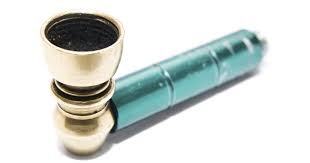
A pipe can be used to smoke marijuana, crack cocaine, heroin, and crystal meth. It can be made of many different materials including wood, metal, acrylic, glass, stone or ceramic, or plastic.
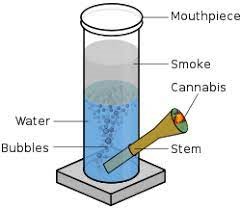
A bong is a water pipe used to smoke marijuana
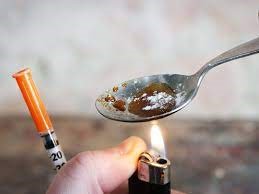
A spoon is used to liquify or dissolve a crystalized form of heroin, crack, or meth.
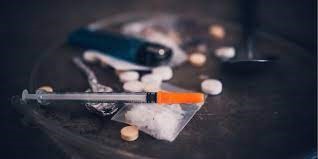
Needles are used to inject a liquid form of cocaine, heroin, prescription narcotics, and meth. A tourniquet like may be used to help constrict the arm to make the vein more prominent.

Razors, small mirrors, and straws, rolled papers, or tube may be used to snort drugs such as cocaine or heroin.
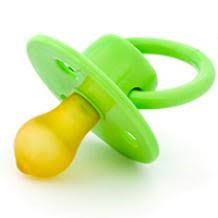
Pacifiers are used to help with teeth grinding and jaw clenching notable after taking MDMA or meth.
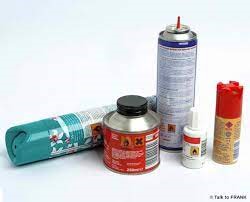
Aerosol cans, glue, balloons, nozzles, or rags can be used as an inhalant.
Drug use among teens is common, but early and frequent education about drugs and their short and long-term effects can help prevent your child from experimenting, abusing, and suffering long-term consequences of drug use. If you believe your child is abusing drugs, please do not hesitate to reach out to a mental health professional or your child’s primary care provider.
Children’s Health Care of Newburyport, Massachusetts and Haverhill, Massachusetts is a pediatric healthcare practice providing care for families across the North Shore, Merrimack Valley, southern New Hampshire, and the Seacoast regions. The Children’s Health Care team includes pediatricians and pediatric nurse practitioners who provide comprehensive pediatric health care for children, including newborns, toddlers, school aged children, adolescents, and young adults. Our child-centered and family-focused approach covers preventative and urgent care, immunizations, and specialist referrals. Our services include an on-site pediatric nutritionist, special needs care coordinator, and social workers. We also have walk-in appointments available at all of our locations for acute sick visits. Please visit chcmass.com where you will find information about our pediatric doctors, nurse practitioners, as well as our hours and services.
Disclaimer: this health information is for educational purposes only. You, the reader, assume full responsibility for how you choose to use it.








